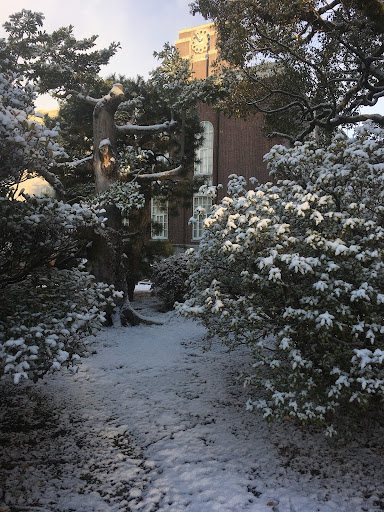I came across the term “iron-containing aerosols” when I was researching how the wind carries desert sand to the ocean and provides it with iron. Aerosols are particles of solid or liquid dispersed in a gas, and the size of the particles varies from 10 nm to 1 mm. Fog, mist, and smoke also seem to fall under the category of aerosols.Other aerosols include fine particles of ash from volcanoes, sulfuric acid aerosols such as sulfur dioxide, carbon aerosols from forest fires, and sea salt aerosols from sea spray created by ocean waves and foam bursting.
In addition, volatile organic compounds called BVOCs, such as terpenes emitted by plants, also become aerosols through oxidation by the atmosphere and sunlight. Aerosols cool the atmosphere by scattering sunlight, or warm it by absorbing it, thus affecting the flow of heat in and out of the Earth. Aerosols also become the nuclei of clouds, so they also seem to affect the albedo, which is the reflectance of sunlight.
In addition, volatile organic compounds called BVOCs, such as terpenes emitted by plants, also become aerosols through oxidation by the atmosphere and sunlight. Aerosols cool the atmosphere by scattering sunlight, or it by absorbing it, thus affecting the flow of heat in and out of the Earth. Aerosols also become the nuclei of clouds, so they also seem to affect the albedo, which is the reflectance of sunlight.
The high-altitude atmosphere is a harsh environment with strong ultraviolet rays, dryness, and extreme temperature changes, so bacteria survive by hiding in the shadows of mineral particles. For this reason, mineral particles such as yellow sand are called “flying arks for microorganisms.”
Bioaerosols also seem to create ice clouds, and ice nucleating bacteria such as Pseudomonas syringae freeze water that normally freezes at -15°C in the sky at -2°C, creating ice nuclei and creating ice clouds. They then descend to the ground with snowfall, destroying plant cells with the ice and living inside the plant. The bacteria are then released back into the atmosphere from dead plants, where they create ice clouds again and move to another plant. So that’s how they move. Ice nucleating bacteria are amazing.

Although the tiny particles of aerosols are invisible to the naked eye, they carry out many things in the atmosphere, such as nutrient circulation, the movement of microorganisms, the formation of clouds and ice clouds, and the adjustment of the absorption and emission of heat from sunlight. Aerosols are amazing. The workings of the Earth are amazing.


